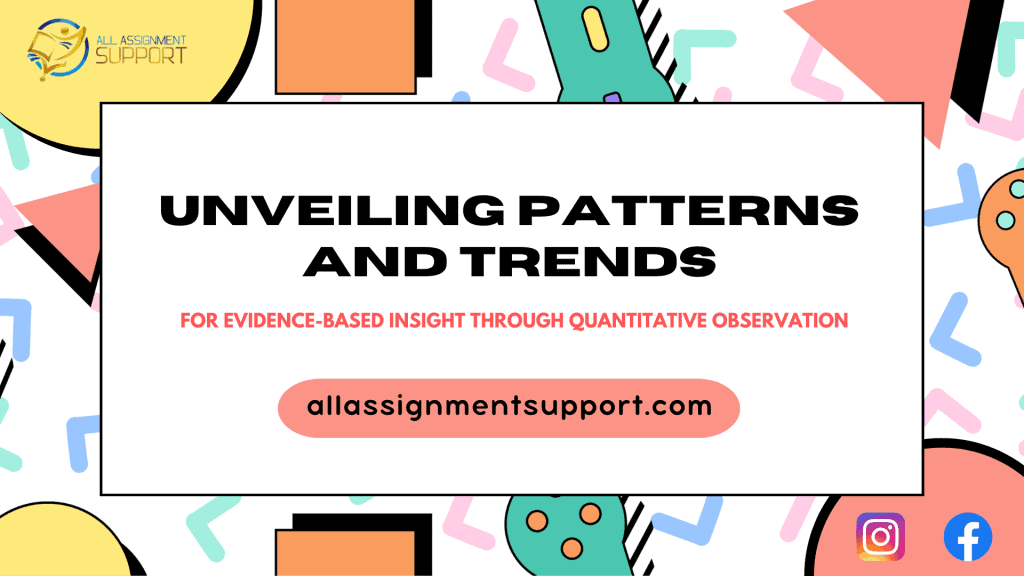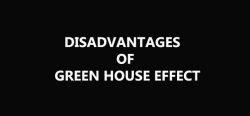Table of Contents
ToggleIntroduction
The pursuit of knowledge often hinges on the systematic collection and analysis of data. Among the various methodologies at the disposal of researchers, quantitative observation emerges as a vital cornerstone, providing a structured framework for capturing objective information in a measurable form. From unraveling the mysteries of the cosmos to deciphering intricate patterns in human behavior, quantitative observation spans the spectrum of academic disciplines.
This article embarks on a comprehensive exploration of “What is a quantitative observation?” illuminating its defining characteristics, unveiling its manifold applications, and underscoring its pivotal role in modern research. As we delve into the essence of this methodology, we gain insights into how it enables us to derive accurate conclusions, make informed decisions, and contribute to the ever-expanding tapestry of human understanding.
Quantitative Observation Definition
What is your understanding of “What is a quantitative observation?” Let us first look at what the quantitative observation definition says to you on the whole!
Quantitative observation is a fundamental method within the realm of scientific research that involves the systematic collection and analysis of numerical data to draw conclusions and make predictions about various phenomena.
Researchers employ objective measurements, statistics, and mathematical analyses to quantify and understand patterns, trends, and relationships among variables in this approach.
In other words, quantitative observation plays a pivotal role in scientific inquiry across various disciplines, formulating hypotheses, testing theories, and generating evidence-based insights.
Read Also: APA format in essays
Key Characteristics of Quantitative Observation
These are some of the key characteristics of what quantitative observation is all about. Well, here is helping you get started with the same:
1. Numerical Data Collection
The hallmark of quantitative observation lies in the collection of numerical data. Researchers utilize instruments and tools that can provide precise measurements, enabling them to quantify attributes, behaviors, or occurrences.
2. Objectivity and Reproducibility
Quantitative observations prioritize objectivity, aiming to eliminate or minimize subjective bias. The methodology should be designed in a way that other researchers can replicate the study and arrive at similar results using the same data and methods.
3. Structured Research Design
Quantitative studies are often structured with clearly defined variables, hypotheses, and data collection methods. Researchers utilize standardized procedures to ensure consistency and minimize potential sources of error.
4. Statistical Analysis
Data obtained from quantitative observation are subjected to rigorous statistical analysis. These analyses help researchers identify patterns, correlations, and causal relationships among variables, providing a deeper understanding of the phenomenon under investigation.
5. Quantifiable Variables
Quantitative observation typically deals with variables that can be measured numerically, such as length, weight, time, frequency, and numerical ratings.
Contributions to the Advancement of Knowledge
There are a significant number of ways as to how quantitative observation techniques help in development of research and technology. Let us have into the same
1. Empirical Validation
Quantitative observation allows researchers to validate hypotheses and theories empirically. By collecting and analyzing quantitative data, researchers can determine whether their predictions align with the observed reality, thus adding evidence to existing knowledge or refining theoretical models.
2. Precision and Generalization
The numerical nature of quantitative observation facilitates precise measurement and comparison of variables. This precision contributes to formulating generalizable principles and theories that can be applied beyond specific instances, fostering the advancement of knowledge across broader contexts.
3. Pattern Identification
Through statistical analysis, researchers can identify patterns and relationships that might not be immediately apparent. These patterns can lead to new hypotheses, insights, and avenues for further research.
4. Data-Driven Decision Making
In various fields, quantitative observation provides a foundation for data-driven decision-making. Whether in medicine, economics, or the social sciences, quantitative data enables informed choices and policy recommendations based on empirical evidence.
5. Cumulative Progress
Quantitative observation facilitates cumulative progress in scientific understanding. As researchers build upon existing quantitative studies, they can refine methodologies, validate or challenge prior findings, and contribute to a more comprehensive understanding of complex phenomenon.
Read Also: Mastering the Midpoint Formula- Precision in Problem Solving
Quantitative Observation Examples in Various Fields
These are the typical examples of how quantitative observation is used in various fields. Helping you get started with respect to the same:
1. Physics
Quantitative Observation Example # 1: Measurement of Acceleration due to Gravity- In a physics experiment, researchers might use a simple pendulum to measure the acceleration due to Gravity. They would record the time it takes for the pendulum to complete a certain number of oscillations. By analyzing these time measurements and applying relevant equations, they can calculate the acceleration due to Gravity with numerical precision.
2. Biology
Quantitative Observation Example # 2: Heart Rate Measurement in Exercise Physiology- In a study related to exercise physiology, researchers might use heart rate monitors to collect quantitative data on participants’ heart rates during different physical activity levels. The researchers would record the number of heartbeats per minute, providing numerical information that can be analyzed to understand the impact of exercise on cardiovascular health.
3. Social Sciences
Quantitative Observation Example # 3: Survey Research on Political Preferences- In a social science context, researchers might conduct surveys to gather quantitative data on people’s political preferences. They would design a structured questionnaire with multiple-choice or Likert scales to quantify respondents’ opinions. The collected data can then be statistically analyzed to identify trends in political views.
4. Economics
Quantitative Observation Example # 4: Inflation Rate Calculation- Economists use quantitative observation to calculate inflation rates. They collect price data for a basket of goods and services over time and numerically analyze the changes in these prices. Economists can quantify the inflation rate by calculating the percentage change in prices, which is a crucial economic indicator.
5. Environmental Sciences
Quantitative Observation Example # 5: Air Quality Monitoring- In environmental science, researchers use instruments that measure pollutants such as particulate matter and gases like nitrogen dioxide. These measurements provide quantitative data about pollutant concentrations in the air, allowing scientists to assess the quality of the environment and potential health risks.
6. Education
Quantitative Observation Example # 6: Test Score Analysis- In educational research, quantitative observation can involve analyzing test scores. Researchers might collect numerical data on students’ performance in standardized tests before and after implementing a new teaching method. By comparing the scores, they can quantitatively assess the effectiveness of the intervention.
In a nutshell, we have seen several scenarios in the form of observable quantitative observation examples that are done by data mining industries and agencies on a real-time basis.
Different Types of Data Collection
These are the different types of data collection methods that are involved in gathering information in varied fields and industries. Helping you get started with the same:
1. Direct Measurement
This involves physically measuring a variable using instruments. For example, in the physics example, researchers directly measured the time of oscillation of a pendulum to calculate gravity’s acceleration.
2. Surveys and Questionnaires
In social sciences, researchers use structured surveys and questionnaires to collect numerical data on participants’ opinions, behaviors, or preferences.
3. Instrumentation
In fields like biology and environmental sciences, specialized instruments like heart rate monitors or air quality sensors collect quantitative data automatically.
4. Experimental Control
Researchers manipulate variables in controlled experiments, collecting data under different conditions and comparing outcomes quantitatively.
5. Secondary Data Analysis
Researchers analyze existing datasets collected by other studies to extract quantitative insights for new research questions.
6. Observational Studies
In fields like astronomy, researchers collect numerical data from observations made using telescopes or other observational tools.
Quantitative Observation in Research
Quantitative observation is a foundational method in scientific research that involves the systematic collection and analysis of numerical data to uncover patterns, relationships, and trends within diverse phenomena. By emphasizing objectivity and employing statistical techniques, quantitative observation contributes to evidence-based decision-making and the advancement of knowledge across various fields.
Read Also: Statistics Project Ideas
Quantitative Observation vs. Qualitative Observation
Quantitative observation and qualitative observation are two distinct research methodologies that serve different purposes in scientific research. Here’s a comparison to clarify their distinctions:
Quantitative Observation:
- Focus: Quantitative observation emphasizes numerical measurement and data analysis. It aims to quantify variables, identify patterns, and establish relationships among them.
- Data Collection: Data is collected using structured instruments, such as surveys, sensors, or measurements. It involves predefined questions, scales, or measurements that yield numerical data.
- Analysis: Quantitative data is analyzed using statistical techniques, allowing researchers to make objective inferences about populations, relationships, and trends.
- Goal: The goal of quantitative observation is often to generalize findings to a larger population, establish causality, and produce numerical evidence.
- Example: Conducting a survey to measure customer satisfaction scores on a scale of 1 to 5.
Qualitative Observation:
- Focus: Qualitative observation emphasizes understanding the context, meanings, and complexities of a phenomenon. It seeks to capture nuances and subjective experiences.
- Data Collection: Data is collected through methods like interviews, observations, and open-ended surveys. It often results in rich textual or narrative descriptions.
- Analysis: Qualitative data is analyzed through thematic analysis, coding, and interpretation, with a focus on identifying themes and patterns in participants’ narratives.
- Goal: The goal of qualitative observation is to explore perspectives, generate hypotheses, and gain an in-depth understanding of specific cases or phenomena.
- Example: Conducting interviews to explore the lived experiences of individuals who have undergone a particular medical procedure.
In a nutshell, we have seen and witnessed quantitative observation examples along with that of a qualitative study so that you understand and relate to the differences between the two of them.
Process of Conducting Quantitative Observation
Here are process-related steps on quantitative observation is done in a methodical manner. Helping you get started with the same:
1. Research Design
Define research questions and hypotheses, and determine variables to measure. This way, you can formulate a research design map in a seamless manner.
2. Operationalization
Translate abstract concepts into measurable variables and choose appropriate measurement scales. This way, you plan the operational sequencing for the analysis.
3. Sampling
Select a representative sample from the target population to ensure generalization. This way, you select constant and independent variables in a precise manner.
4. Data Collection
Collect quantitative data using structured instruments such as surveys, experiments, or observations with predefined criteria. As a process, you must sample to get estimated figures and stats for the surveys to come out perfectly.
5. Data Entry
Input collected data into a database or spreadsheet for analysis. This is a mandatory step as you have to feed the information into your computers or CRMs to tabulate and process the data that will provide you with meaningful insights that fuel data sampling results post your analysis.
6. Data Analysis
Analyze data using statistical methods, including descriptive statistics (mean, median, standard deviation) and inferential statistics (t-tests, regression, ANOVA). This way, you further analyze data and convert raw figures into meaningful info.
7. Interpretation
Interpret the statistical results to draw conclusions about relationships, patterns, and trends in the data. You must interpret details in an unbiased manner. For doing so, you need the data in its well-interpreted form.
8. Conclusion and Generalization
Discuss findings in the context of the research questions and hypotheses. Assess the generalizability of results to the broader population. You must draw up the conclusions post thorough analysis of research related survey findings.
Ensuring Reliability and Validity of Collected Data
Here are the series of steps on how you can ensure the reliability and validity of the observation data figures that have been collected from the sources above. Helping you get a deeper understanding of how it is being done:
1. Standardization
Use standardized measurement protocols and data collection procedures to ensure consistency. This is because you need standard procedures to deduce data figures and store them at data collection banks.
2. Pilot Testing
You must pre-set data collection instruments on a small sample to identify and address any issues. By a pilot testing procedure, you analyze the outcome of the survey you intend taking up with generalized audiences.
3. Inter-Rater Reliability
If applicable, ensure multiple observers or coders achieve consistent results. This step ensures you have multiple observers who authenticate the data using similar patterns and trends.
4. Randomization
Randomly assign participants to groups or conditions to minimize bias. Random surveys help you in getting results in an accurate manner.
5. Control Groups
Implement control groups in experiments to isolate the effects of independent variables. This is needed as research developers need to distinguish between dependant and independent variables.
6. Triangulation
Use multiple data sources or methods to corroborate findings. This is needed as we need insightful data from different points of view.
7. Peer Review
Have other researchers review the study design, methodology, and results for quality assurance. This way, you get a proper review from your own teams before you present it to the audiences outside.
8. Validity Checks
Assess construct validity, content validity, and external validity to ensure the accuracy and applicability of results. This way, you can understand if you present the right kind of data to your audiences or not.
Significance of Quantitative Observation
These are the following ways by which you can interpret how significant the value of quantitative observation is for the real-time world. Helping you understand the importance of authentic data research and data agencies collect using quantitative observation methods that are deployed accordingly:
1. Objective Data Collection in Research
Objective data collection is a cornerstone of scientific research that ensures the findings’ integrity, reliability, and credibility. By emphasizing objectivity, researchers minimize personal bias and subjective interpretations, producing more accurate and trustworthy results.
Quantitative observation in research focuses on numerical measurements and provides a structured and standardized approach to data collection. This objectivity enables replication, allowing other researchers to reproduce the study’s procedures and obtain similar results. Objective data collection fosters transparency and accountability, making research outcomes more robust and conducive to building upon existing knowledge.
2. Statistical Analysis and Data-Driven Inferences
Quantitative observation in research and development relies heavily on numerical data, making it particularly suited for statistical analysis. Statistical techniques allow researchers to uncover patterns, relationships, and trends within the data.
Researchers can determine whether observed differences are statistically significant by applying statistical tests, which is crucial for drawing valid conclusions.
This analysis helps uncover correlations, causations, and associations among variables. It transforms raw data into interpretable information, providing insights that might not be apparent through simple observation. Statistical analysis empowers researchers to make data-driven inferences that guide hypothesis testing and theory formulation.
3. Support for Hypotheses and Evidence-Based Decision Making
Quantitative observation plays a pivotal role in supporting hypotheses and validating theoretical assumptions. Researchers design experiments and studies with ideas in mind, collecting quantitative data to test these hypotheses rigorously. The numerical data collected allow researchers to determine whether their predictions hold systematically and objectively. When ideas are confirmed through quantitative observation, they contribute to the body of evidence supporting existing theories or informing the creation of new ones.
Furthermore, quantitative observation aids evidence-based decision-making across various domains. In medicine, economics, and policy development, data-driven decisions are crucial for effective outcomes.
Quantitative observation provides empirical evidence that informs policies, strategies, and interventions. For instance, public health officials might use quantitative data on disease prevalence to make informed decisions about resource allocation and preventive measures. By relying on objective numerical data, decision-makers can mitigate subjectivity and base their choices on concrete evidence.
Challenges and Considerations in Quantitative Observation
These are the challenges and considerations you may have to look for in the manner in which data obtained through quantitative observation has to deal with, using a degree of caution. Helping you get started with the same:
1. Biases and Sources of Subjectivity
While quantitative observation minimizes subjectivity, several biases can still affect the process. Researcher bias, where the investigator’s beliefs or expectations influence data collection or interpretation, can inadvertently skew results. Selection bias might arise when the sample chosen does not truly represent the larger population. Moreover, participant bias can emerge if participants modify their behavior due to awareness of being observed, leading to inaccurate data collection.
2. Sample Size and Representativeness
The importance of sample size must be balanced in quantitative observation. Small sample sizes might not accurately reflect the population’s diversity and characteristics, leading to results that are not generalizable. Conversely, overly large samples might lead to statistically significant findings that lack practical significance.
Ensuring the representativeness of the sample, where it reflects the demographic and characteristic makeup of the broader population, is crucial for drawing meaningful conclusions.
3. Challenges in Standardization
Maintaining standardized procedures across data collection is essential for minimizing variability and ensuring the validity of results. However, challenges can arise in providing consistent conditions, especially in field studies.
Environmental factors, differences in equipment calibration, and human errors can introduce unwanted variations. Researchers often face the challenge of balancing real-world relevance and controlled conditions.
4. Measurement Errors and Reliability
Quantitative observation is susceptible to measurement errors, which can arise from instrument inaccuracies, human error during data entry, or variations in participants’ responses.
These errors can affect the collected data’s reliability and compromise the study’s integrity. Ensuring the reliability of measurements involves using reliable instruments, training data collectors, and cross-checking data for consistency.
5. Ethical Considerations
Quantitative observation requires careful ethical considerations, especially in fields involving human subjects. Protecting participants’ privacy, obtaining informed consent, and ensuring data confidentiality are critical.
Researchers must navigate potential ethical dilemmas, such as balancing research benefits with potential risks to participants.
Addressing Challenges and Enhancing Rigor
Here are methods on how you can address the challenges of data obtained via quantitative observation methods. Helping you get a deeper understanding of the same:
1. Random Sampling
Use random sampling techniques to reduce selection bias and enhance the generalizability of findings. This way, you avail data results that even a common man can understand.
2. Pilot Testing
Conduct pilot tests of data collection procedures to identify and rectify any issues before full-scale data collection. Migration procedures or pilot testing is necessary to find out if your data sampling figures suit the survey in an authentic manner.
3. Blinding
Employ double-blinding, where neither participants nor researchers know which group is receiving a particular treatment, to reduce bias in experiments. You must keep your survey experiments in an exclusive manner to avoid conflict of interest between participating groups.
4. Data Cleaning
Implement rigorous data cleaning procedures to identify and rectify errors in collected data. To reduce data inaccuracies or inadequacies, data cleaning procedures are definitely needed.
5. Replication
Encourage replication studies by other researchers to validate and verify findings, enhancing the robustness of results. This is because authentic data findings must be validated by other researchers and data analysts too.
6. Transparent Reporting
Clearly document all aspects of the research process, from study design to data collection, analysis, and interpretation, to enhance transparency and accountability. By reporting data findings at every stage of the process, you can derive results in a more comprehensive and accurate manner.
7. Ethical Review
Seek approval from ethical review boards to ensure research involving human subjects adheres to ethical guidelines. By doing so, you can modify your test results to suit the ethical requirements of your company or organization.
8. Continuous Training
Train data collectors to ensure consistency and accuracy in data collection procedures. This is because constant training helps your teams keep up the procedures in an up-to-date manner.
Future Trends in Quantitative Observation
These are the future trends by which we can aim to collect data via quantitative observation data figures. Using Artificial Intelligence and intelligent data mining techniques that are being made of extensively by digital companies, we can expect more. Helping you get a sneak peek into the same:
1. AI and Machine Learning Impact
Integrating artificial intelligence (AI) and machine learning (ML) revolutionizes quantitative observation across various disciplines. AI algorithms can process and analyze large volumes of data more efficiently than traditional methods. In fields like healthcare, AI-powered image analysis can aid in diagnosing diseases from medical images. In finance, ML algorithms can predict market trends based on massive datasets. These technologies enhance accuracy, uncover complex patterns, and enable predictive modeling, significantly expanding the scope of quantitative observation.
2. Cross-Disciplinary Collaborations
Collaborations between diverse disciplines are poised to advance observation techniques. For instance, a collaboration between biology and engineering might lead to the development of innovative sensors for real-time environmental monitoring. By combining expertise from multiple fields, researchers can introduce fresh perspectives, novel methodologies, and advanced instrumentation that can enhance the precision and scope of quantitative observation.
3. Big Data and Computational Analysis
The era of big data has profound implications for quantitative observation. As the volume and complexity of data increase, traditional analysis methods might become inadequate. Computational analysis, including data mining, network analysis, and complex simulations, is becoming essential. In genomics, massive datasets require sophisticated computational tools to identify genetic markers linked to diseases. This trend empowers researchers to extract insights from data on scales previously unattainable.
4. Sensor Technology Advancements
Advances in sensor technology are instrumental in enhancing quantitative observation. Sensors are becoming smaller, more accurate, and capable of measuring various variables.
In environmental sciences, the advanced sensors can provide real-time air quality, water quality, and more data. This real-time monitoring aids in rapid response to environmental changes and disaster mitigation.
5. Internet of Things (IoT) Integration
IoT involves the interconnection of devices and objects through the internet. This integration allows for continuous data collection from various sources.
For example, IoT-enabled smart cities can gather data from sensors throughout urban areas to monitor traffic flow, air quality, and energy consumption. This wealth of real-time data enhances the granularity and timeliness of quantitative observations.
6. Ethical and Privacy Considerations
Ethical and privacy concerns are growing with the increased use of AI, big data, and IoT in quantitative observation. Ensuring data security, maintaining anonymity, and obtaining informed consent becomes more complex in the face of these emerging technologies.
Researchers must balance the benefits of advanced observation techniques with protecting participants’ rights and privacy.
Conclusion
Quantitative observation, a vital research method, entails systematically collecting numerical data to reveal patterns and trends. Its objectivity ensures reliable results, while statistical analysis empowers data-driven inferences. This approach’s significance spans physics, biology, and the social sciences, contributing to knowledge advancement.
Challenges include biases, sample size considerations, and standardization complexities. Collaboration between disciplines and emerging trends like AI, big data, and IoT will reshape the future of observation. Embracing quantitative observation invites researchers to explore its transformative potential, fostering evidence-based decisions and driving innovative research endeavors.
About Us
Do you have difficulty in completing your school or college-level quantitative observation assignments and projects to precision? Do you want to score excellent grades while you submit your projects to your school teachers or college lecturers?
Then fret not. You have All Assignment Support that can help you finish your projects in a professional and concise manner.
Frequently Asked Questions (FAQs)
1. What are some common types of statistical tests used in quantitative observation?
Answer: Common statistical tests used in quantitative observation include t-tests, ANOVA, correlation analysis, regression analysis, chi-square tests, and factor analysis. These tests help researchers analyze relationships, differences, and associations among variables.
2. How can researchers address potential confounding variables in quantitative observation studies?
Answer: To address confounding variables, researchers can use techniques like randomization, matching, and statistical control. Randomization helps distribute potential confounders evenly across groups, while matching involves pairing subjects with similar characteristics. Statistical control involves including confounding variables as covariates in statistical analysis.
3. What strategies can researchers use to enhance the reliability of quantitative observation data?
Answer: Researchers can enhance reliability by using consistent measurement protocols, training data collectors, conducting pilot tests, and implementing inter-rater reliability checks. Data cleaning and verification processes also ensure the accuracy and consistency of the collected data.
4. How can quantitative observation be used in longitudinal studies?
Answer: Quantitative observation in longitudinal studies involves repeatedly measuring variables over an extended period. Researchers track changes and trends within individuals or groups. This approach is valuable for understanding development, aging, or the effects of interventions over time.
5. How does the choice of data visualization methods impact the interpretation of quantitative observation results?
Answer: Data visualization methods, such as histograms, scatter plots, and bar charts, play a crucial role in conveying patterns and trends in quantitative data. The choice of visualization depends on the nature of the data and the relationships being explored. Effective visualizations enhance understanding and facilitate the clear communication of findings.
6. What are the steps that are involved under a data collection process using scientific methods?
Answer: Data Collection procedures follow a 6-sigma approach in a scientifically prolific manner. These steps include:
- Observation: The research analyst observes the latest market trends and collects data through random analysis and observations.
- Researching: The data figures that have been collected get evaluated to form a baseline for the next segment of research and analysis.
- Hypothesis: Based on the data figures or values that have been collected, data scientists formulate hypothesis. Here, the hypothesis refers to the scientific outcome of the result from the data values that have been collected.
- Experimentation: The researchers further experiment with data values to check if the expected outcome of survey results can be validated on a real-time basis.
- Data analysis: Using scientific patterns or trends, data miners deduce relationships or similar patterns with the collected sets of data.
- Conclusion: Based on data analysis and research, scientists deduce whether the actual outcome mirrors the hypothesis in terms of its expected result or not. When the results or data’s outcome mirror hypothesis, data insights are drawn up and communicated to public audiences. Else, the data analytics teams up to work on collecting more data sets to authenticate the hypothesis that was created at the beginning of the experiment.
7. What is quantitative seismology?
Answer: Data interpretation figures or analysis are made to pass through seismic graphs. Therefore, graphical representation of data figures gets calculated through empirical and statistical methods. The data then collected is represented via data charts, pie diagrams or bar graphs. The entire process entails quantitative seismology.
Graphical representation of data helps quantify data in a more understandable and realistic manner. Communication of data results also becomes easier when you present data through tabulated figures and statistical charts.
8. What is the sole purpose of representing facts and figures through scientific methods?
Answer: You provide a more authentic and insightful analysis to the results that have been derived post tabulation, estimation and evaluation of rough-hand numbers and raw data figures. Therefore, data insights can be communicated to the general audiences in a more relevant and meaningful manner giving least amount of scope for any kind of bias and laundering with the available sets of data.
9. What is a scientific report?
Answer: A scientific report is a type of document that presents data findings in a systematic and comprehensive manner. For example, trends and data figures are represented through pie-charts, bar diagrams and maps. This way, more researchers and data analysts can build derived results from the outcome of survey results or similar experiments.
In a scientific or statistical report, you have a brief heading on what the experiment or survey is all about. The objects or components taken for research findings are also stated on the data chart. The curves or seismic movements of objects then get imprinted on the data reports.
10. What does sigma stand for in a scientific research?
Answer: When you perform a scientific experiment or have to derive certain computations to derive a theory, you use standard deviations with respect to the same. The deviations are referred to as sigma values as in a scientific research or observation.
11. What is a scientific ethnobotany?
Answer: Although this particular terminology does not hold much relevance to quantitative methods of observation, you need to know about it if you deep dive into this approach of scientific observation.
Scientific ethnobotany in a broader sense, refers to the relationship one observes between people and plants. Quantitative ethnobotany relies on numerical data and statistical analysis to derive meaningful insights and data realizations.











